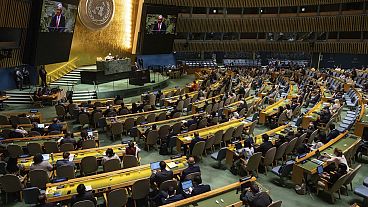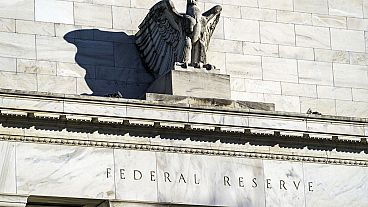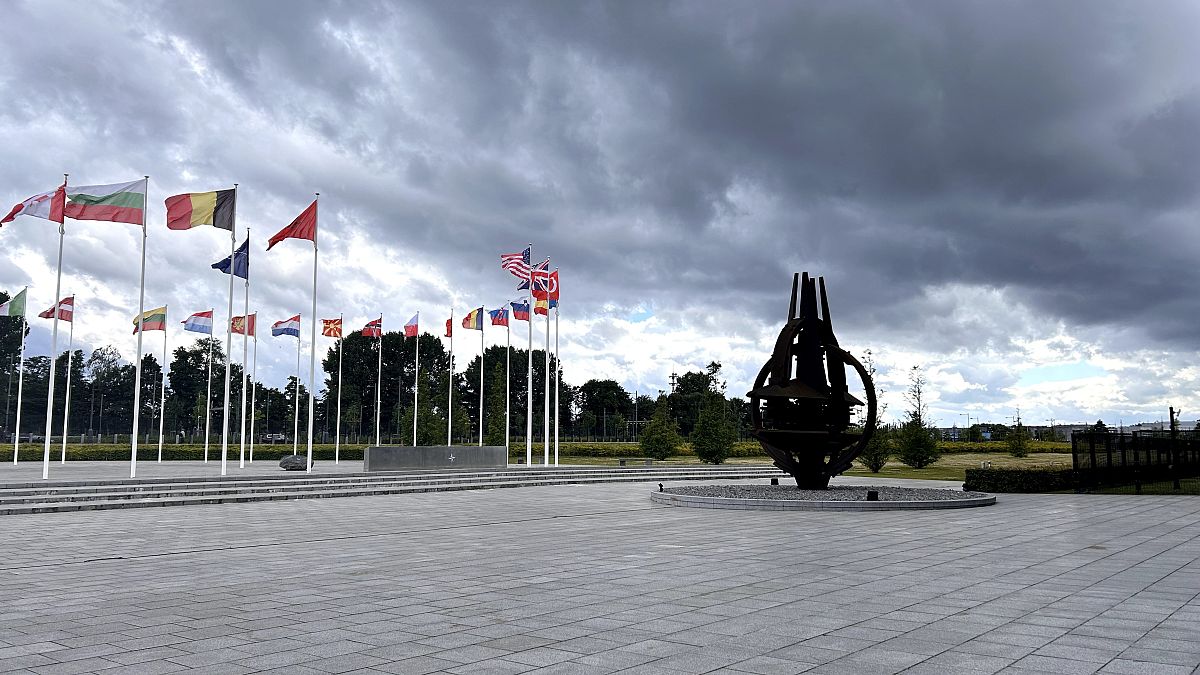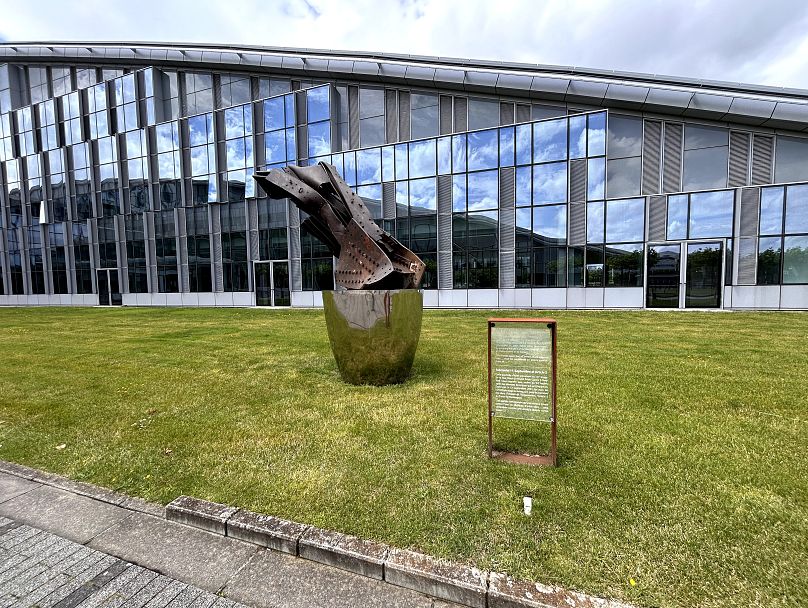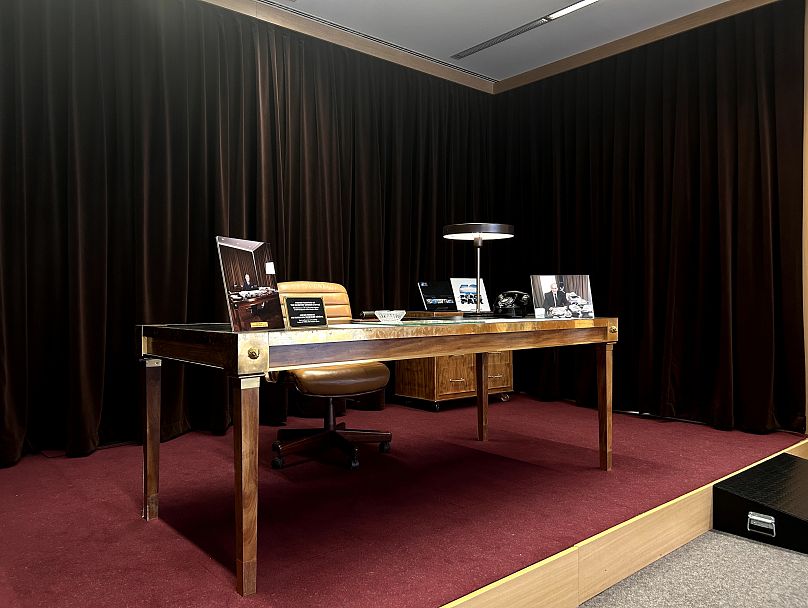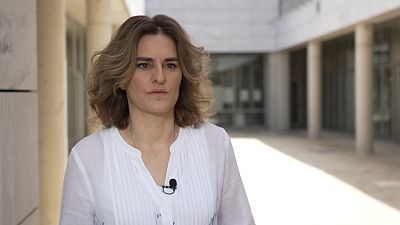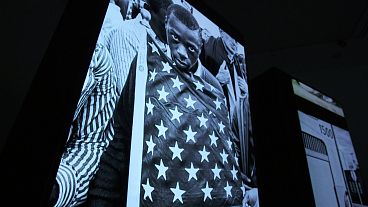NATO is 75 this year but its archive of historic documents and items has only been gathered together over the last 25-years. Alliance officials occasionally call on historic pieces, pulled from its archive, to help strengthen their cultural diplomacy efforts.
What do you do with classified documents you can’t destroy?
You build an archive to store them.
NATO, the North Atlantic Treaty Organisation, which is celebrating its 75th anniversary this year, has amassed quite the collection since its creation in the wake of the second World War.
Classified documents, as well as various objects that have played a part in its history — such as gifts received by its leaders on official trips — are stored in a vast archive split between the alliance’s headquarters in Brussels, and Washington D.C., where the treaty was originally signed, back in 1949.
“It’s about preserving corporate memory,” said Nick Nguyen, a NATO public disclosure officer.
His job entails coordinating the declassification of documents through a lengthy public disclosure process, that includes getting consensus from an internal committee as well as the NATO member states. Through this process, officials decide which pieces of history are shared with the world at large.
As such, while only a handful of officials possess unrestricted access, certain objects will on occasion be pulled out of the shadows and either displayed throughout the NATO building, for employees and visitors to see, or shown on special occasions, helping strengthen diplomacy efforts.
Beef stew and soft power
Such was the case during a reception held in Brussels earlier this year at the residence of the US Ambassador to NATO Julianne Smith, with the goal of garnering interest in the ensuing celebration surrounding the alliance’s 75th anniversary which was about to take place in Washington DC.
In a corner of the welcome room was displayed a cookbook from 1957, containing recipes for traditional dishes from all alliance member states. Dwight D. Eisenhower, who had served as NATO’s first Supreme Allied Commander and was at the time of publication already president, submitted his favorite recipe for inclusion: the old-fashioned beef stew.
Nguyen was on site to present the artifact to guests and start discussions. The diplomatic power of cultural exchange, he explained, lies in the implied “level of mutual engagement. It encourages a specific kind of dialogue that adds a personal dimension to the negotiation of a political relationship.”
NATO’s headquarters in Brussels also serves as an exhibition space in itself, and Euronews Culture was offered a tour of the part of the building that is open to visitors. The current building has been in use since 2018 and is the alliance’s fifth, with the previous one having been just up the road from its current location.
Entrance into the building arrives at the end of a long walkway, where two pieces of history are placed on each side: a piece of the Berlin Wall on the left hand side, and a piece of New York’s World Trade Tower, which was attacked on 11 September 2001, on the right.
One of them “is a symbol of freedom, the other a symbol of solidarity,” current NATO Secretary General Jens Stoltenberg once said in a 2019 speech before the US Congress. In the aftermath of the 9/11 terror attack, NATO’s foundational Article 5 provision, which states all members should treat an attack against one of them as an attack against all, was formally triggered.
The US gifted NATO headquarters with a piece of the fallen towers, as “a reminder of how all NATO allies stood with the United States in its hour of need,” Stoltenberg said in the same speech. It remains, to this day, the only time in the military alliance’s history that Article 5 has been invoked.
Inside the building itself, the visitors center now includes a replica of the private office of the Secretary General, as it existed in the old building. To bring it to life, Nguyen worked with a company specializing in museum exhibits. Guests can sit in the Secretary General’s chair, in front of his desk, while listening to recordings of all 13 leaders.
Tours have only been given on a regular basis since 2021. Nguyen says there has been a constant stream of interest from “7 year olds to heads of state,” all having left with a copy of the founding Treaty and the memory of a unique experience.


